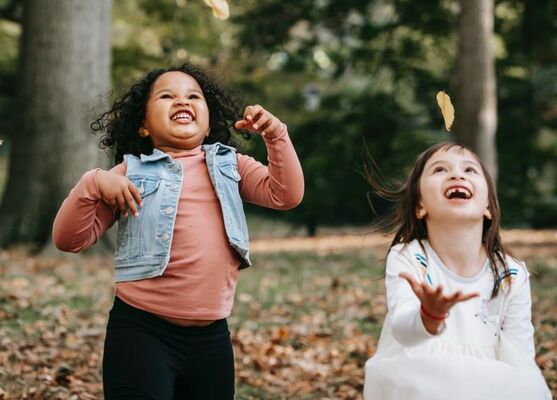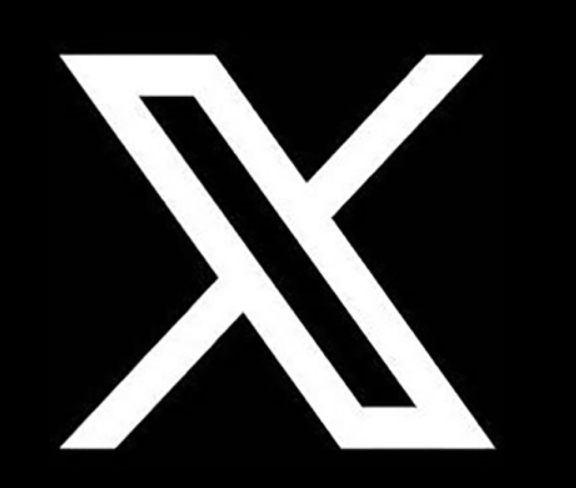Goals 4 and 5: Comprehensive Education and Gender Equality
In Parts 1, 2 and 3 of this series, I discussed some of the history of Agenda 2030, its vision as described in the preamble, and the first three extremely ambitious goals: to end “all poverty” and provide universal health coverage for all. In this article, I take a closer look at Goal 4, which has a direct impact on what our children are taught in schools today, and Goal 5, which addresses gender equality.
The quotes directly attributed to Agenda 2030 in this article come from “United Nations: Transforming Our World: The 2030 Agenda for Sustainable Development. A/RES/70/1”. This document can be viewed online at sustainabledevelopment.un.org.
Historically in the United States, one of our values as a nation has been to protect our children. Whether to protect them from exposure to abuse, or exposure to inappropriate images of pornography, most adults in our nation have voted for individuals who will support laws that protect children.
But in recent years, in numerous school systems, our children have been exposed to images and text that are considered “pornographic” by concerned parents and others. These parents have clashed verbally in recent months with school boards that permit graphic, explicit sexual education for children not only in high school but in middle and even primary grades. These clashes have included concerns about books in school libraries that promote an LGBTQ+ agenda or contain graphic descriptions of sexual encounters.
If you have wondered about the push for early childhood “education” regarding sexuality, the reason can be traced in large part to Goals 4 and 5 of the 2030 agenda.
At first look, the first of these seems innocuous enough:
Goal 4 calls for “inclusive, equitable, quality education provided at all levels, from early childhood through all levels” including tertiary, technical and vocational training). Education for children is a good thing, right?
Of course, Goal 4 includes the following: “ensure that all learners acquire the knowledge and skills needed to promote sustainable development, including, among others through education for sustainable development and sustainable lifestyles, human rights, gender equality, promotion of a culture of peace and nonviolence, global citizenship and appreciation of cultural diversity and of culture’s contribution to sustainable development.”
Note that this Agenda proposes teaching children “global citizenship” and “sustainable development” (as in Environmental, Social, and Governance, ESGs).
This raises the question: does the Agenda describe “education” or “indoctrination”? Because in many of today’s schools, instead of patriotism and the pledge of allegiance, children are being taught to be good “world citizens” and to become activists for diversity and green lifestyles.
Another question is: “What does the UN incorporate into the idea of 'inclusive, equitable, quality education' to be provided at all levels”? To answer this, let’s look at what the UN itself - through UNESCO - says regarding part of this education: sexual education.
In “International technical guidance on sexuality education. An evidence-informed approach, Revised edition” [1], UNESCO defines Comprehensive Sexuality Education (CSE) as: “a continuing educational process that starts at an early age, and where new information builds upon previous learning, using a spiral-curriculum approach.”
Hmmm, sexual education starts at an early age, such as in kindergarten and primary school, which is what we are now seeing in our school systems.
This section also addresses education regarding gender equality: “CSE contributes to gender equality by building awareness of the centrality and diversity of gender in people’s lives; examining gender norms shaped by cultural, social and biological differences and similarities; and by encouraging the creation of respectful and equitable relationships based on empathy and understanding.” [ibid]
Our schools are adopting this agenda at a rapid pace. In the curriculum itself, by high school, learners of this international curriculum will be able to “analyze local and/or national laws and policies concerning Childhood Early & Forced Marriage (CEFM), Female Genital Mutilation Cutting (FGM/C), non-consensual surgical interventions on intersex children, forced sterilization, age of consent, gender equality, sexual orientation, gender identity, abortion, rape, sexual abuse, sex trafficking; and people’s access to sexual and reproductive health services and reproductive rights.” [1] The assumption in this broad-ranging curriculum is that abortion is included in those rights, and that gender identity is based on cultural and social norms, as well as biology.
Concept 2.3 teaches the following “key idea” to children aged 12-15: “Social, cultural and religious factors influence what is considered acceptable and unacceptable sexual behavior in society, and these factors evolve over time.” The child is then encouraged to “question social and cultural norms that impact sexual behavior in society (skill).” [ibid]
Of course, the question could be raised: how does the UN believe that what is considered “acceptable and unacceptable sexual behavior” “evolves over time”? It would appear that old-fashioned standards of moral absolutes that do not change are not considered in this curriculum.
In section 3.1, children ages 5-8 are given the following learning objectives:
“Key idea: It is important to understand the difference between biological sex and gender. Learners will be able to: define gender and biological sex and describe how they are different (knowledge); reflect on how they feel about their biological sex and gender (skill).” [ibid]
This is actively promoting those very young children in kindergarten and primary school to begin exploring gender identity, and how they feel about being male or female. This should raise red flags for parents with traditional values regarding sexuality because children are very impressionable at this age. In the news media, we are hearing reports frequently about what can happen if you ask a young child how they “feel” about being a boy or a girl, and what happens in some school systems if they respond that they would like to be the other sex.
The concerns about graphic sexual education for young children and its impact are highlighted by a member of a ranking UN group, Sharon Slater, President of Family Watch International and Chair, the UN Family Rights Caucus. In her report, “An Analysis of the UN Sustainable Development Agenda: The Hidden Threats to Life, Family and Children” [2] she highlights concerns that she and other representatives of member nations have regarding Agenda 2030 and its goals.
In this report, Slater shares the World Health Organization's (WHO - the health arm of the UN) position regarding what comprehensive sexual education really is. In the report, she states that the “WHO’s standards actually recommend teaching children from newborn to 4 years old about masturbation”, ages 4-6 about “different norms regarding sexuality,” ages 6-9 about “different methods of contraception” and “love towards people of the same sex,” ages 9-12 about “pleasure, masturbation, and orgasm,” and “sexual rights as defined by the International Planned Parenthood Federation,” ages 12-15 about “sexual orientation and gender identity,” ages 15 and up are to be taught “a critical view of different cultural/religious norms” and to accept and celebrate “sexual differences.” [ibid]
This goes hand in hand with the UNESCO curriculum described above, where by ages 9-12, an objective for the course is that children be able to “explain how someone’s gender identity may not match their biological sex (knowledge)” and by age 15-18, the child is taught how “Homophobia and transphobia are harmful to people of diverse sexual orientation and gender identity” with lessons on how to identify these things occurring, and demonstrate support for people that are transsexual or homosexual. [1]
While bullying and stigmatization are always wrong, the problem is that this curriculum goes beyond teaching acceptance of others to promote a worldview that biological sex may be a “mistake”, and lays the foundation for actual activism which is part of the curriculum for 15-18-year-olds.
Slater discusses how many terms in the SDG's (Sustainable Development Goals) goals, targets and indicators were left “intentionally ambiguous” to “advance controversial rights.” [2] While Agenda 2030 states that it is “nonbinding” on the member nations, in actuality, Slater shares that the Agenda was expected “to have a profound influence on laws and policies around the world. Indeed, a number of the goals and targets call for legal and policy changes in national legislation.” [ibid]
Protection of Parent’s Rights by UN Rejected
Prior to the adoption of Agenda 2030, Slater shares a bit of the back history of controversy surrounding it. She writes that “provisions calling for the protection of the family, recognizing the role of the family in development, reinforcing the rights and role of parents with regard to their children, and provisions encouraging respect for religious and cultural values were all rejected during UN negotiations, despite repeated calls for their inclusion by multiple UN Member States.”
Slater makes clear that she believes this lack of inclusion was intentional, to allow SDG targets to be used to promote “sexual and abortion rights, LGBTQ rights, and a right to comprehensive sexuality education without the knowledge and consent of parents.” [ibid]
When member nations wanted the term “gender” to be replaced by “sex”, this was “adamantly rejected by the countries most active in promoting LGBT rights.” [ibid] The effect has been to create a very different interpretation of Agenda 2030’s Goal 5: “Achieve gender equality and empower all women and girls” than would appear at first glance. While many of the goals under this goal are laudable and meant to prevent violence against women and female children, the term “achieve gender equality” has been translated into activism for the gay and trans movements in many countries, including the United States.
Education that equips children for either a trade or ongoing further education is a good goal. And gender equality that protects females of all ages from violence is also an excellent goal. But beneath these good causes is the deeper, darker agenda that Slater and other member nations of the UN have identified. Instead of merely “education”, this agenda appears to promote “indoctrination” and the exposure of very young children to graphic depictions of sexuality and concepts that are beyond their developmental capacity at best and bordering on sexually abusive at worst.
If we wish to protect our children, we must become aware of the educational norms and curricula that have been endorsed by the member nations of the UN through Agenda 2030, and take action to speak out against those which go against our personal values. It would be good to contact those you have elected to office, from the school board to US Senator, and find out what their position is on the Agenda 2030 and UN agendas for teaching our children.
References:
1. “International technical guidance on sexuality education. An evidence-informed approach,” Revised edition, 2018. Published by United Nations Educational, Scientific and Cultural Organization (UNESCO) in 2018, as part of its Sustainable Development Goals for Education 2030.
2. Slater. “An Analysis of the UN Sustainable Development Agenda: The Hidden Threats to Life, Family and Children”.
Agenda 2030: The Agenda to End National Sovereignty (Part 4)
Published in Blog on January 03, 2023 by Sheri Waldrop






